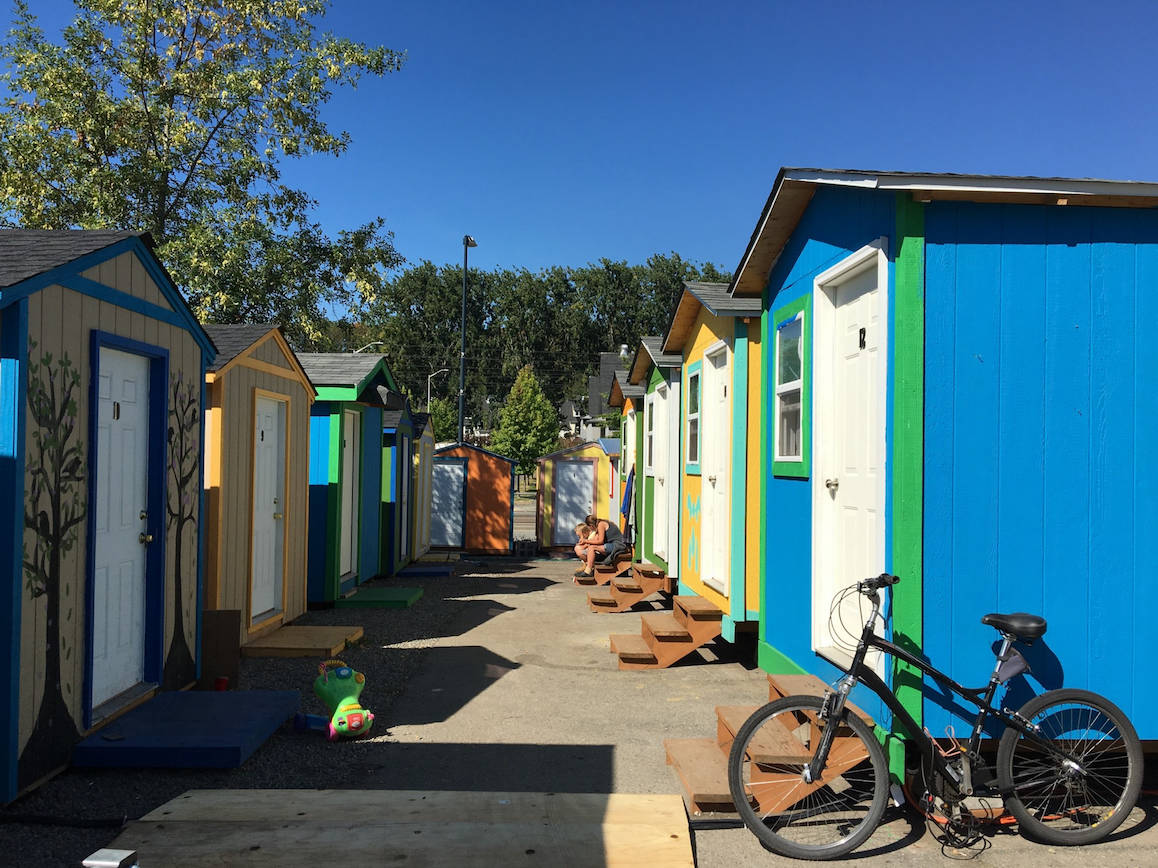On March 30 and 31, a group of 20 local Mercer Island volunteers built two tiny houses on the lawn of Mercer Island Presbyterian Church near Island Crest Way.
The church is engaged in a capital campaign to raise funds for much needed repairs and core building systems. The theme of the campaign is “Building Inside Out.” The tiny house project was a grassroot’s effort to give tangible meaning to how the local church can, in even a small way, build inside out and help address homelessness in Seattle. The kids at the Pebble Preschool at MIPC are making art for inside the houses. The project was funded by the Mercer Island Presbyterian Church Missions Foundation.
The houses will be moved from Mercer Island in April or May to a tiny house village in Seattle operated by the Low Income Housing Institute (LIHI), a major nonprofit housing developer. It has 61 properties in six counties, including housing for people exiting homelessness, low-wage workers, veterans, young adults, low-income seniors and people with disabilities. In two years of operation, LIHI case workers helped more than 300 people transition into permanent housing and more than 200 people find employment.
Since it takes three to four years to build a new apartment building, LIHI wanted to see what they could do for the person who’s out on the street or living in their car more immediately. LIHI turned to tiny houses.
The tiny houses are 8 feet by 12 feet. They are insulated and heated, have lights and electrical outlets and are located in groups with a community kitchen, bathroom and security. The city of Seattle has offered property for tiny house villages, as has the Port of Seattle, some private property owners and church groups. The residents of the tiny house villages participate in the day to day organization and social workers help the residents find employment and permanent housing.
“We are housing hundreds and hundreds of people seven tiny house villages now”, said Sharon Lee, LIHI’s director.
“Tiny houses are a crisis response, not permanent housing, but they are dry, warm and secure,” said Lee.
Each tiny house costs under $3,000 in materials. For more information, visit the tiny house information page on www.LIHI.org.



